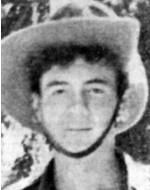Jacob, son of Mina and Yehuda-Meir, was born on March 2, 1930 in Lodz, Poland, was educated in a religious family and attended a public school in his city. World War II, which was annexed to the German Reich, followed by brutal persecutions of Jews, abductions of slave labor and abuse, and the economic and social life of the city’s Jews collapsed and they were forced to wear yellow badges. A ghetto was set up in Lodz in February 1940. The ghetto was closed in April and some 200,000 people were forced to return to the ghetto. Jews were forced to work in production plants for the Germans, and the ghetto soon became a site of mass death: overcrowding and poor sanitary conditions caused epidemics, and the population suffered from starvation and starvation. During the Holocaust, most of the Jews of Lodz were exterminated, and only after the war did his father succeed in bribing a Polish priest in the city of Krakow with a considerable sum of money to adopt Jacob until the storm passed. Jacob grew up in HaKohen’s house and lacked nothing, but all his thoughts and desires were given to his family and his people who suffered in the war. Therefore, at the end of the war, he left the strict Christian house despite many entreaties, and went to Germany and France to prepare himself for immigration to Palestine. At the time of his aliyah, Yaakov met with people from Israel, inquired, demanded and was very interested in the life of the country. After his investigations, he decided to study the mechanics of automotive mechanics, so that he could help with hard work and build the country. In October 1946, he boarded the Latrun, organized by the Haganah’s Mossad Le’Aliyah Bet. The British followed the ship from the moment of its departure, and when it reached the sea, it was taken over by force. Latrun was towed to the port of Haifa, and at the beginning of November 1946 the immigrants were forcibly removed and loaded onto deportation ships, which took them to detention camps in Cyprus. Yaakov spent six months in the deportation camp. Upon arriving in Israel in May 1947, he joined the youth group at Kibbutz Afikim in the Jordan Valley and was about to leave for a short period of training. He studied easily, liked all his friends, worked and became acclimatized in the life of the country. When he established the State of Israel, Yaakov joined the Palmach and served in the “Hanegev” Brigade, the 12th Brigade in the Hagana. Cyprus and volunteered to fight in the War of Independence. These were about 20,000 young people, who during World War II fought many different armies and partisan units. The Haganah emissaries located them, recruited them, and trained them in the transit camps, and upon their immigration to Palestine they were integrated into the fighting units. Yakov and his unit were among the fighters of the Palmach’s 9th Battalion, the “Ha-Hashita” Battalion, which was established on the eve of the invasion of the Arab states by the Armored Corps and served as a mechanized raid battalion. His base was in Mishmar Hanegev (“Hayot Hanegev”), and was unique in that his fighters were mounted on jeeps. The Ninth Battalion fighters escorted supply convoys to the Negev, raided hostile villages, and engaged in reprisals. They sabotaged the railway, gathered intelligence to attack the Gaza airport and blew up bridges. Jacob participated in many activities. His friends remember him as having a strong national consciousness, strong in spirit, and sometimes called him “Yasha” and “Kuba”. With his comrades in the brigade, he fought in the conquest of Beersheba in the “Yoav” operation, breaking the siege on Sodom, which was besieged in Operation L”Operation Horev” (Operation Horev), and Operation Horev (also known as the Operation “Ein” – Gaza, Auja and Assalog) was held in the last stages of the war. The Egyptian army, to expel him from Israel and to force the Egyptians to start negotiations for a cease-fire.In the operation, commanded by Yigal Allon, a partner of several combat brigades, who were brought south from areas where the campaign was quiet, In the course of which forces were sent to Rafah to battle the infrastructure of the Egyptian army, to disengage the forces stationed in the Gaza area from northern Sinai, thereby withdrawing from the Gaza Strip. Mg Tevet Ts”t (01/04/1949) fatally injured Jacob enemy planes bombing his lungs. He was taken to the collection station in Auja al-Hafir, where he died during surgery. He is nineteen years old when he falls. Yaakov was buried by members of the Harel Brigade in Halutza. He was then transferred to eternal rest in the cemetery at Kibbutz Dorot, a kibbutz to which he underwent training from Afikim. Although not all the targets of Operation Horev were achieved, the Israeli forces continued to advance and even penetrated into Sinai. The Egyptian system collapsed and the entire Egyptian army in the Gaza Strip was besieged. Following the invasion of Sinai, heavy political pressure was exerted on Israel and it was required to withdraw, but the threat of disengagement did its job, and on January 6, 1949, Egypt announced its agreement to open negotiations with Israel. The next day the fire stopped on the southern front, thus ending the fighting on the Egyptian front. This hero is a “last scion”. The survivors of the Holocaust are survivors of the Holocaust who survived the last remnant of their nuclear family (parents, brothers, sisters, sons and daughters) who experienced the Holocaust in the ghettos and / or concentration camps and / or in hiding and hiding in territories occupied by the Nazis and / Or in combat alongside members of the underground movements or partisans in the Nazi-occupied territories who immigrated to Israel during or after World War II, wore uniforms and fell in the Israeli army.
